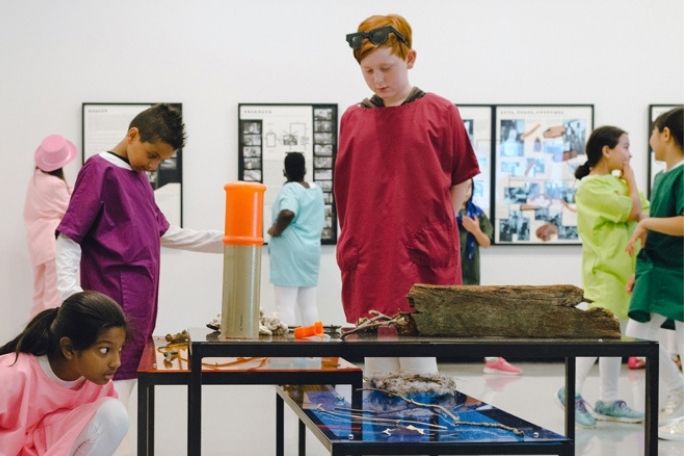Lesson Summary
Students are encouraged to work on an art submission for The Resilient Artist class exhibition. Students experiment with their own art style and consider techniques analysed in the artworks during this unit. The final artwork is displayed within the school under a banner entitled: “The Resilient Artist”. The teacher may also take a video of the work for a virtual exhibition and post this on the school website.
Learning Intentions:
Students will...
- investigate how art can communicate an environmental message about flood or fire within the Australian landscape.
Success Criteria:
Students can...
- realise a piece of artwork developed from an artist’s brief to contribute to a class exhibition entitled, “The Resilient Artist”.
Lesson guides and printables
Lesson details
Curriculum Mapping
Australian Curriculum content descriptions:
Year 7 & 8 Art:
- Investigate ways that visual conventions, visual arts processes and materials are manipulated to represent ideas, perspectives and/or meaning in artworks created across cultures, times, places and/or other contexts (AC9AVA8E01)
- reflect on the ways that they and other artists respond to influences to inform choices they make in their own visual arts practice (AC9AVA8D02)
- select and manipulate visual conventions, visual arts processes and/or materials to create artworks that represent ideas, perspectives and/or meaning (AC9AVA8C02).
Syllabus outcomes: VAS4.3, VAS4.5.
General capabilities: Critical and Creative Thinking, Personal and Social Capability.
Cross-curriculum priority: Sustainability.
Relevant parts of Year 7 & 8 achievement standards:
By the end of Year 8, students identify and analyse how other artists use visual conventions and viewpoints to communicate ideas and apply this knowledge in their artmaking. They explain how an artwork is displayed to enhance its meaning. They evaluate how they and others are influenced by artworks from different cultures, times and places.
Students plan their art-making in response to the exploration of techniques and processes used in their own and others’ artworks.
Level of teacher scaffolding: This lesson involves a medium level of teacher scaffolding with teachers facilitating class discussion, encouraging students’ reflective writing skills about art and facilitating class understanding about how art is used as a form of communication about what is happening in the world.
Resources Required
- A device that connects to the internet to present google slides
- Art folio or art materials such as design programs, paint, pencil, crayon, paper, rubber, etc
Skills
This lesson is designed to build students’ competencies in the following skills:
- Communication
- Community Engagement
- Critical Thinking
- Creativity
- Cultural Understanding
- Empathy
- Social Skills
Additional Info
We encourage you to undertake the free PD Course How to teach a unit on fire and flood resilience for tips on how to best deliver this lesson.
If you’re concerned about the challenging nature of these topics, consider the free PD Course How to approach trauma in the classroom for information on how best to support your students.
This lesson was made in partnership with
Minderoo Foundation (www.minderoo.org)


Welcome back!
Don't have an account yet?
Log in with:
By signing up to Cool.org you consent and agree to Cool's privacy policy to
store, manage and process your personal information. To read more, please see
our privacy policy here(Opens in new tab).
Create your free Cool.org account.
Many of our resources are free, with an option to upgrade to Cool+ for premium content.
Already have an account?
Sign up with:
By signing up to Cool.org you consent and agree to Cool's privacy policy to
store, manage and process your personal information. To read more, please see
our privacy policy here(Opens in new tab).